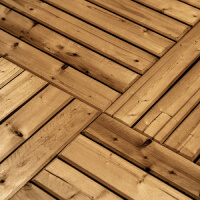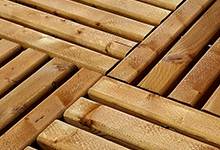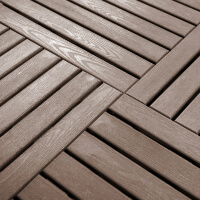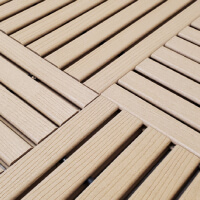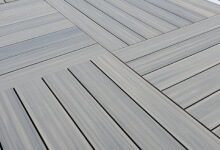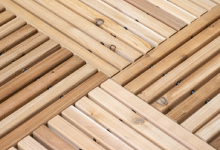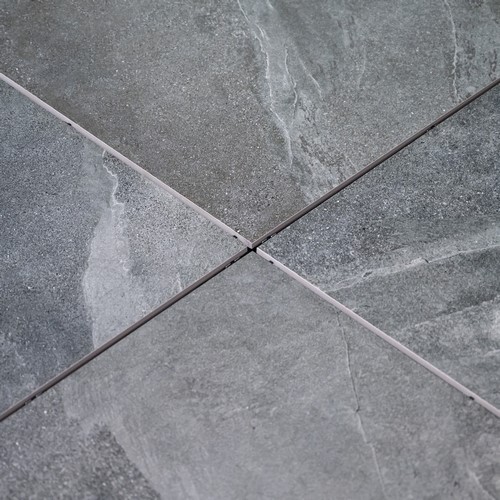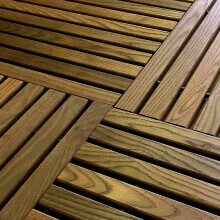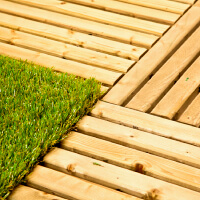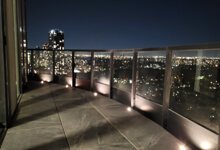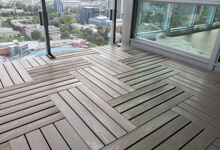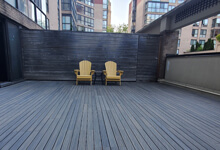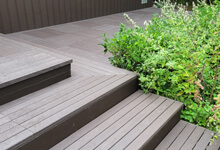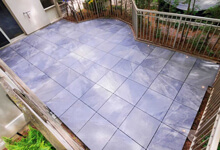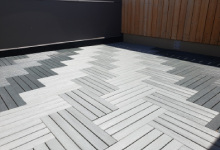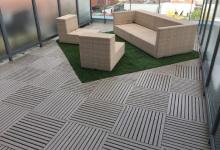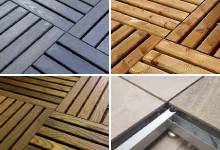Would you like to browse our deck tile products and accessories?

- By: Designer Deck
- Tags: Deck Tiles, narrow board pressure treated wood deck tiles, wood deck tiles
- Category: Blog
- 0 comment
Whether you’re looking to revamp your patio, balcony, or backyard, narrow board pressure treated wood deck tiles offer a robust and stylish solution. In this post, we’ll explore the many benefits of these tiles, guiding you through installation, maintenance, and creative design ideas to enhance your outdoor living space.
Understanding Pressure Treated Wood
What is Pressure Treated Wood?
Pressure treated wood is wood that has been treated with a special chemical to stop it from rotting, getting damaged by bugs, or decaying. This treatment extends the life of wood, making it ideal for outdoor environments where moisture and pests are common concerns.
Advantages of Pressure Treated Wood
The main benefits of using pressure treated wood include its longevity and durability. It’s also a cost-effective option compared to other materials like composite decking, as it maintains a natural wood appearance and strength without breaking the bank.
Benefits of Narrow Board Deck Tiles
Aesthetic Appeal
Narrow board deck tiles provide a modern, sleek look that can make smaller outdoor spaces appear larger. Their uniforms are all the same size and shape, so you can arrange them in lots of different ways when you put them up.
Durability and Longevity
These tiles are made to handle tough weather like hot sun and cold snow, so your deck stays nice for a long time.
Cost-Effectiveness
When compared to alternatives like full-size lumber or composite materials, narrow board tiles are often more affordable and offer a better return on investment due to their durability.
Installation of Narrow Board Deck Tiles

Required Tools and Materials
To install these tiles, you’ll need basic tools such as a saw, a drill, a hammer, measuring tape, and safety gear like gloves and goggles.
Installation Guide
- Prepare the Surface: Ensure your installation area is flat and clear of any debris.
- Lay the First Tile: Start at one corner and lay the tiles, snuggly fitting them together as you go.
- Cut Tiles to Fit: Cut tiles to fit around edges and obstacles, such as support railing posts or complex shapes like angles.
- Secure the Tiles: Depending on the perimeter, some tiles may need to be secured with a few dabs of adhesive to prevent shifting. Apply to open edge perimeters only or drive screws in for easier access if possible.
Installation Tips
- Check for level frequently as you lay tiles to avoid an uneven surface.
- Use galvanised parts such as brad nails to secure sleepers and/or crown staples to connect smaller cuts that do not have a wood sleeper backing.
Maintenance and Care
Routine Maintenance
Regularly sweeping your deck and washing it with soapy water can prevent buildup of dirt and grime. Inspect annually for any loose tiles or signs of rot. Power washing your wood will help to get off tough grim over time and should only be done every 4-5 years at a distance, as if not to fray up wood surface. Check your power washer PSI and test small areas before proceeding to get a feel for the power of your equipment and how it affects this process of deep cleaning.
Treatment and Cleaning
Applying a wood preservative or stain every few years will help to maintain the color and protect the wood from ultraviolet rays and moisture. Be forewarned, this usually requires yearly upkeep.
Seasonal Tips
Before winter, clear your deck of leaves and debris to prevent mold and mildew growth, and consider covering it if heavy snow is expected.
Design Ideas Using Narrow Board Deck Tiles
Design Options
Experiment with laying tiles in a herringbone or diagonal pattern to create visual interest. Use contrasting colors to define areas or borders.
Creative Uses
Extend the tiles from your patio onto a garden path, or use them to create a cohesive look on balconies and around pools.
Material Combinations
Incorporate glass panels or metal railings for a contemporary edge, or surround your deck with lush plantings for a more natural vibe.
Environmental Considerations of Pressure Treated Wood Deck Tiles
Chemical Treatment and Environmental Impact
Pressure treated wood is made with chemicals to stop it from getting rotten, breaking down, or being eaten by bugs. Common chemicals used include copper azole and alkaline copper quaternary (ACQ), which are less harmful than the previously used chromated copper arsenate (CCA) but still carry environmental concerns, especially regarding leaching into the soil and water bodies. These concerns are particularly relevant in areas with high rainfall or near water sources like lakes and rivers.
Handling and Disposal Concerns
The handling of pressure treated wood requires certain safety measures to avoid exposure to toxic substances. It is recommended to use gloves and masks when cutting or sanding this wood. As it prevents inhalation of sawdust or direct contact with the skin. Disposal also poses issues, as pressure treated wood should not be burned in open fires or residential fireplaces. Because of the release of toxic chemicals in the smoke. Proper disposal typically involves taking the wood to approved landfill sites that can handle chemically treated materials.
Sustainability of Wood Sources
Another important factor is the sustainability of the wood sources themselves. It is often sourced from pine, which is a relatively fast-growing tree. This making it a more sustainable option than slower-growing species. However, ensuring that the wood comes from sustainably managed forests is key.
Eco-Friendly Alternatives
For those seeking more sustainable alternatives to pressure treated wood, there are several options:
Composite Decking
Composite decking is made of a proprietary wood fiber and resin mixture. It’s strong and doesn’t need chemicals to stay durable. It also offers the advantage of using less wood with added advantage.
Thermally Modified Wood
This wood maintains its structure using a process to heat and cook the material to just before the point of burning. Instead of chemicals, thermal treatment seals the cells to further protect the life expectancy of the hardwood. It’s completely natural and less toxic.
Bamboo Decking
Bamboo grows super-fast, so we can get a lot of it quickly. It’s tough like regular wood but better for the environment. Bugs and decay don’t bother it much, so we don’t need to use as many chemicals on it.
Conclusion
At Designer Deck, we know it’s important to make outdoor areas nice, useful, and eco-friendly. We’ve looked into narrow board pressure treated wood deck tiles, and they’re strong and look good. But we also need to think about the environment. Thanks for thinking about Designer Deck for your outdoor space. Let’s make decks that last and are good for the Earth too.



